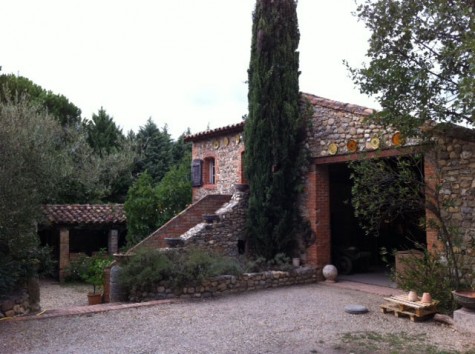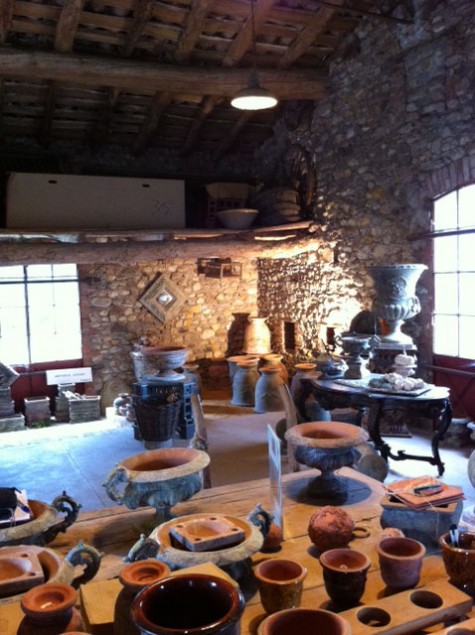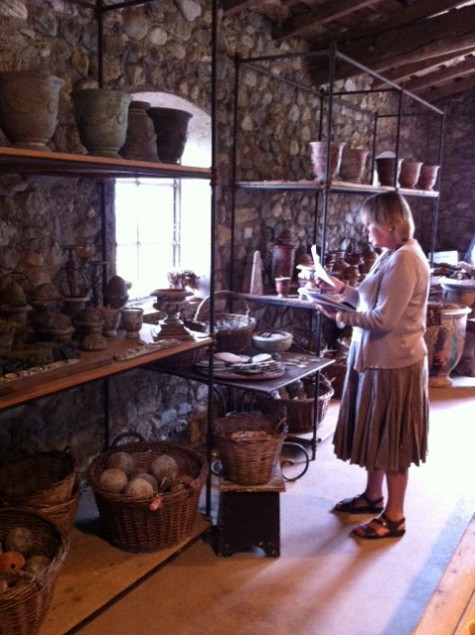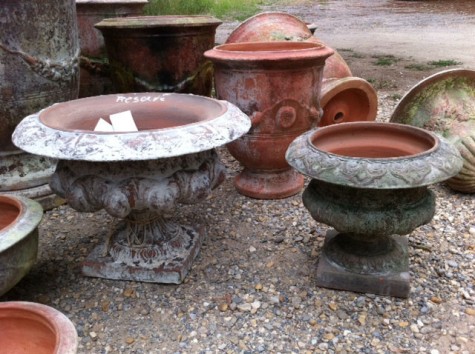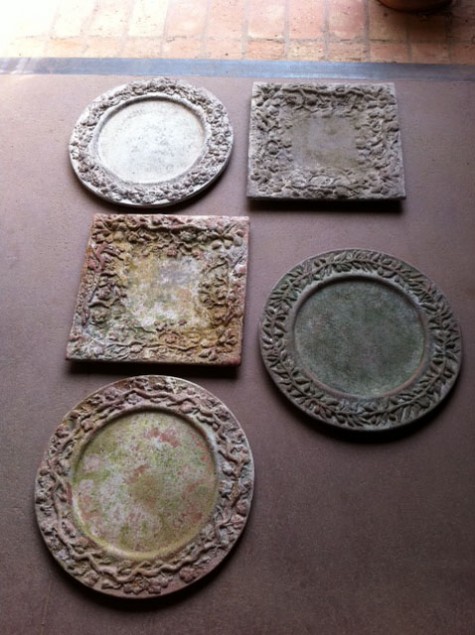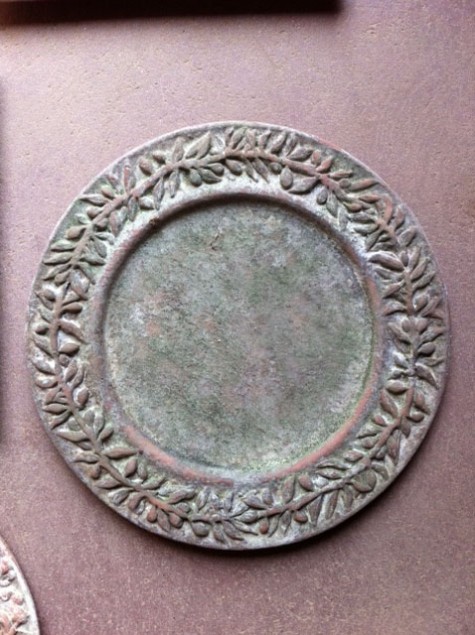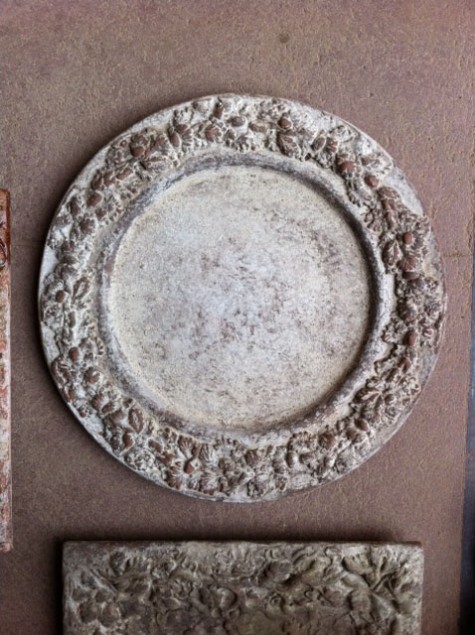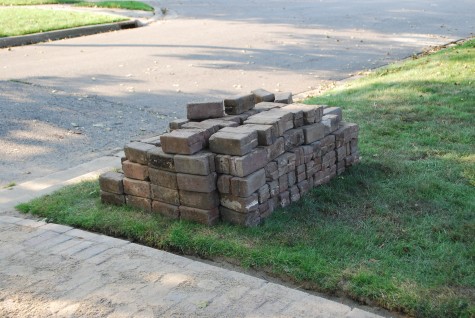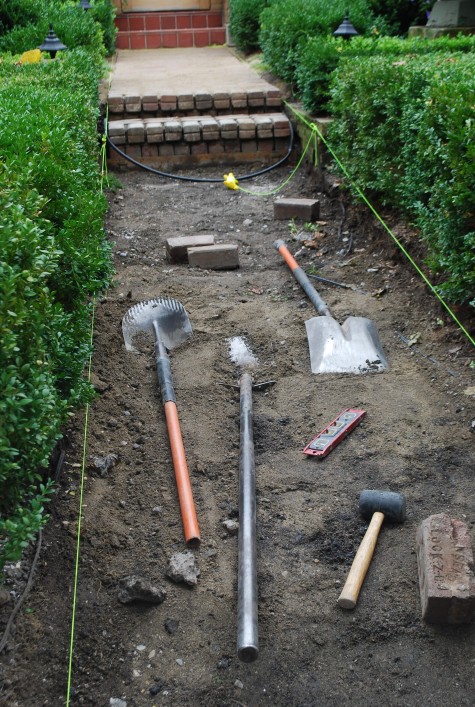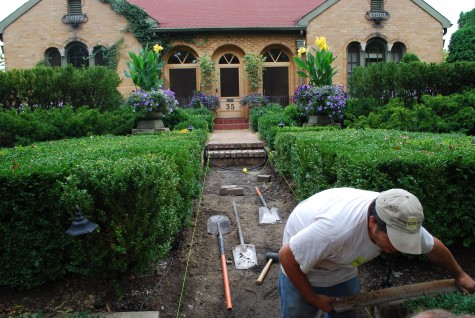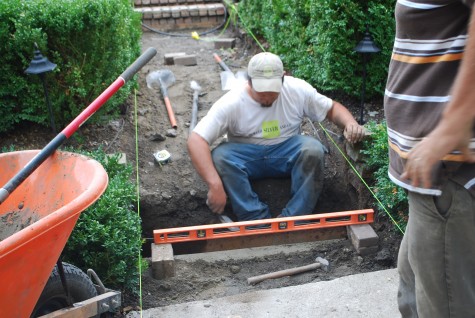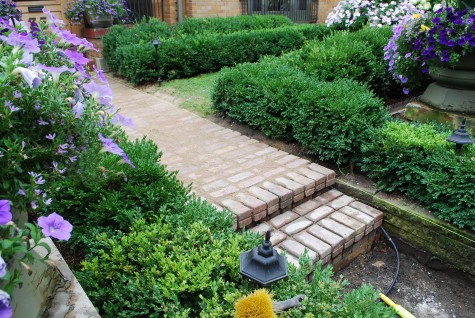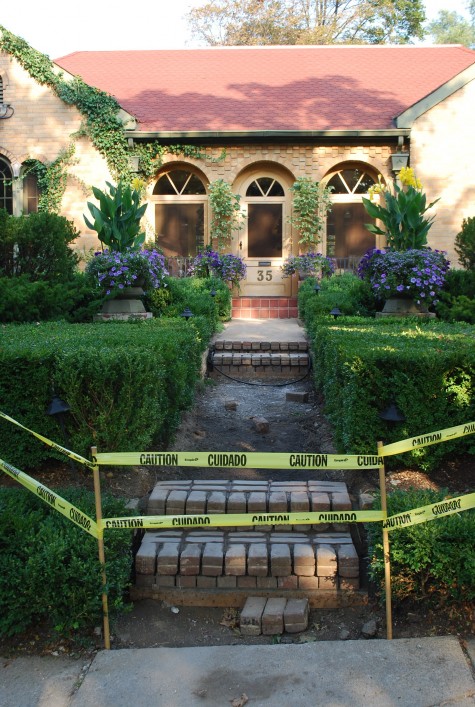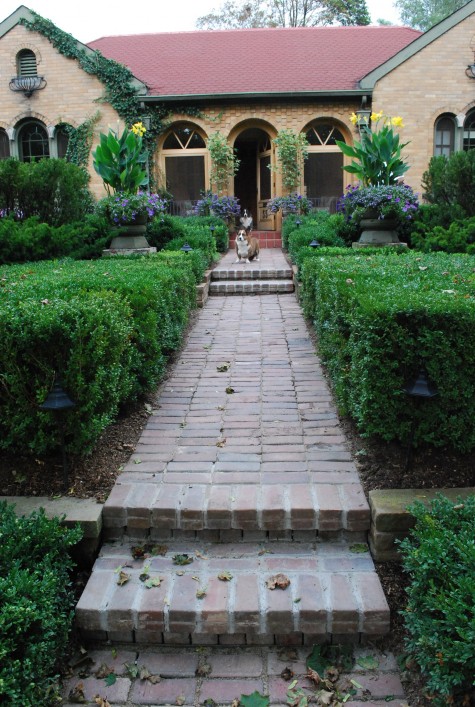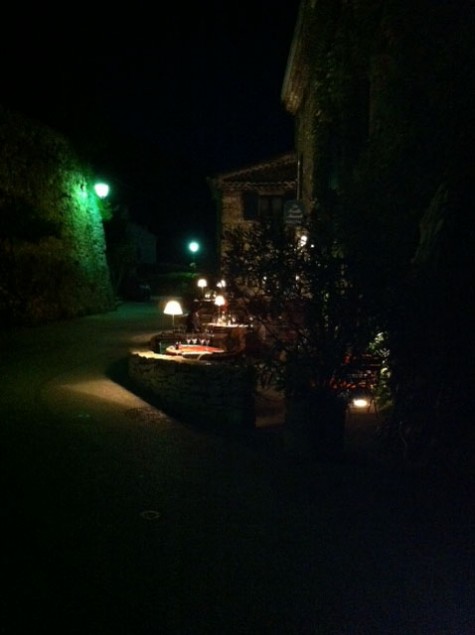 Rob has been putting in some very long days. He doesn’t quit until the daylight is gone. He sent me an entire group of pictures about his 9 o’clock dinner hour. Rural France is not in any way lit like my neighborhood at night. The light is intense, but just every so often. The dark is punctuated by the occasional light. I cannot imagine having dinner outdoors only inches from the road. Public American landscapes are all about medians, curbs, and most importantly, big spaces. Big segregated spaces. Rural French landscapes are about a very close relationship between travel, commerce, farming, neighborhood, and the natural landscape. It is a small country. Dinner on the edge of the road-a unique experience.
Rob has been putting in some very long days. He doesn’t quit until the daylight is gone. He sent me an entire group of pictures about his 9 o’clock dinner hour. Rural France is not in any way lit like my neighborhood at night. The light is intense, but just every so often. The dark is punctuated by the occasional light. I cannot imagine having dinner outdoors only inches from the road. Public American landscapes are all about medians, curbs, and most importantly, big spaces. Big segregated spaces. Rural French landscapes are about a very close relationship between travel, commerce, farming, neighborhood, and the natural landscape. It is a small country. Dinner on the edge of the road-a unique experience.
 The lamp illuminating the striped tablecloths-just enough light to make the space cozy. I have mixed feelings about landscape lighting. Lighting for safety’s sake is a given. Stairs, doorways and sidewalks are spaces that get used regularly at night need to be well lit. Lighting the landscape is so easy to over do. The best light-natural light. Sunny, overcast, early late, stormy-natural light is much about climate and weather. What comes next is about artifice. How much artifice is too much, and how much is just right?
The lamp illuminating the striped tablecloths-just enough light to make the space cozy. I have mixed feelings about landscape lighting. Lighting for safety’s sake is a given. Stairs, doorways and sidewalks are spaces that get used regularly at night need to be well lit. Lighting the landscape is so easy to over do. The best light-natural light. Sunny, overcast, early late, stormy-natural light is much about climate and weather. What comes next is about artifice. How much artifice is too much, and how much is just right?
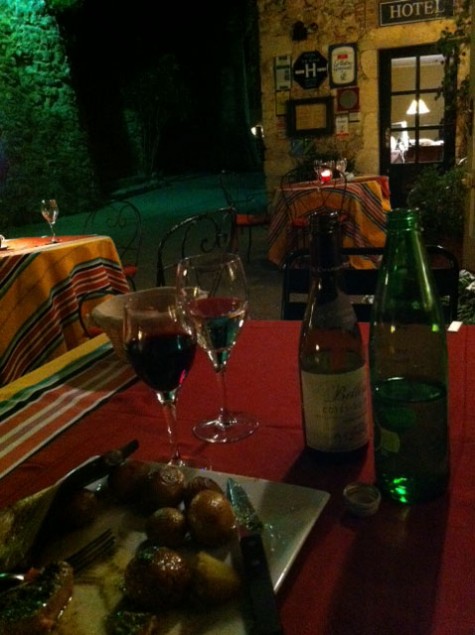 Up lighting gives every element of the landscape a theatrical look-as in the the drawings and paintings Degas did of dancers in the theatre. Down lighting, expertly done, believably replicates the the light of the moon. In this picture, all of ther light is coming from the top down, or from the side. Up lit trees have a very theatrical and unnatural look to them. I light my pumkins in my pots at Halloween-it gives them an extra measure of holiday creepiness. At the Christmas holiday, I pull out all the lighting stops. We have more dark than light, and our natural light is likely to be about grey and overcast.
Up lighting gives every element of the landscape a theatrical look-as in the the drawings and paintings Degas did of dancers in the theatre. Down lighting, expertly done, believably replicates the the light of the moon. In this picture, all of ther light is coming from the top down, or from the side. Up lit trees have a very theatrical and unnatural look to them. I light my pumkins in my pots at Halloween-it gives them an extra measure of holiday creepiness. At the Christmas holiday, I pull out all the lighting stops. We have more dark than light, and our natural light is likely to be about grey and overcast.
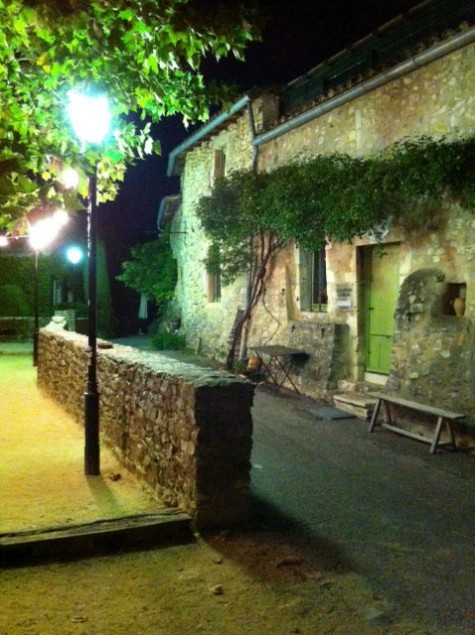 Rob’s pictures are provocative. Perhaps uneven lighting creates an exciting atmosphere. Very bright street lighting is about providing safe passage, but has that carnival, rather than theatrical look to it. Black shapes, and long shadows are visually striking. The CFL’s-or compact flourescents are cool to the point of being cold. The CFL’s, in combination with incandescent lighting-the French are doing such innovative work with combining the two.
Rob’s pictures are provocative. Perhaps uneven lighting creates an exciting atmosphere. Very bright street lighting is about providing safe passage, but has that carnival, rather than theatrical look to it. Black shapes, and long shadows are visually striking. The CFL’s-or compact flourescents are cool to the point of being cold. The CFL’s, in combination with incandescent lighting-the French are doing such innovative work with combining the two.
 Artificial light is not one bit like the light from the sun. This is not to say that one source of light is better than another. Just different. This lit doorway has a lonely but starkly beautiful look. This is a landscape experience of a different sort. Rob has a big interest in lighting. I am sure I will see the results of this evening in France somewhere is his winter and holiday lighting schemes.
Artificial light is not one bit like the light from the sun. This is not to say that one source of light is better than another. Just different. This lit doorway has a lonely but starkly beautiful look. This is a landscape experience of a different sort. Rob has a big interest in lighting. I am sure I will see the results of this evening in France somewhere is his winter and holiday lighting schemes. 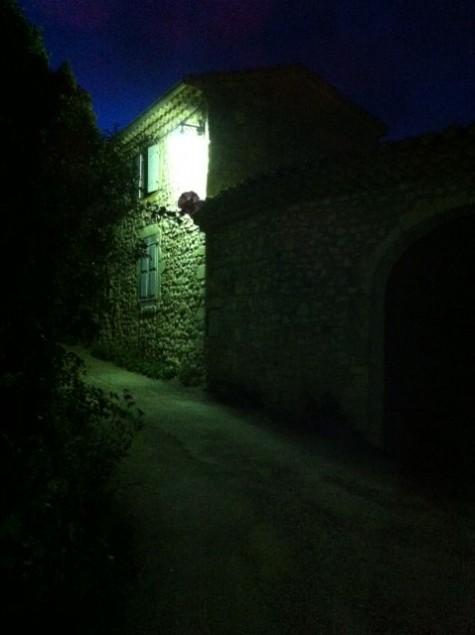 Rob’s late evening in France was as much about the light as the place. The deserted streets in the evening is much different than in my neighborhood, where there is activity almost all night long. Every season I vow to spend more time thinking about how a landscape can be beautifully lit. This is not to say I do not consider the lighting-I have a contractor whose point of view and skill I really like.
Rob’s late evening in France was as much about the light as the place. The deserted streets in the evening is much different than in my neighborhood, where there is activity almost all night long. Every season I vow to spend more time thinking about how a landscape can be beautifully lit. This is not to say I do not consider the lighting-I have a contractor whose point of view and skill I really like.
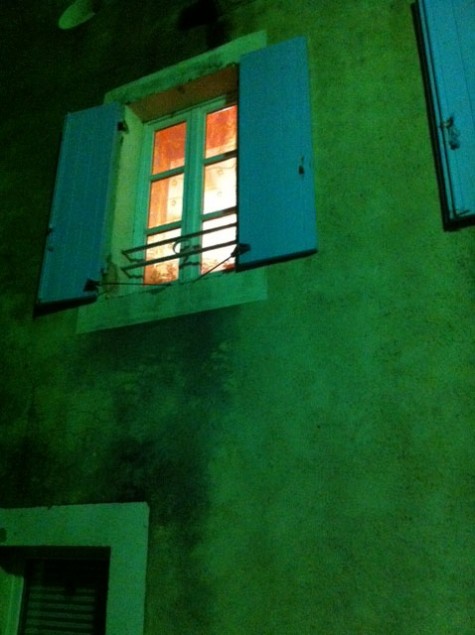 The warm light illuminating this building comes from within. The green walls appear all the more blue, given the compact fourescent light from the street. The green walls, blue shutters, and orange light-vivid.
The warm light illuminating this building comes from within. The green walls appear all the more blue, given the compact fourescent light from the street. The green walls, blue shutters, and orange light-vivid.
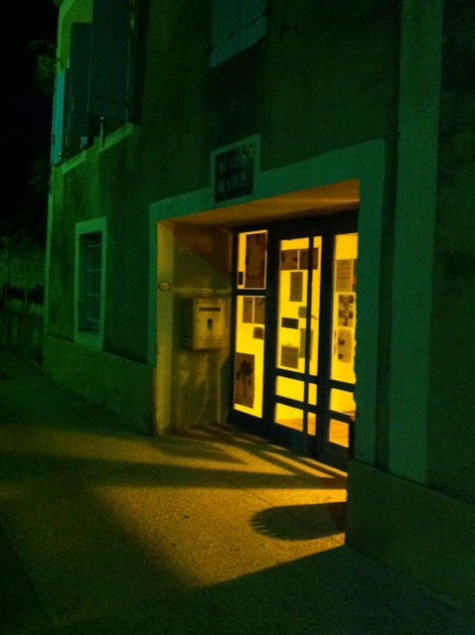 This is the mayor’s office. The warm yellow orange light from the interior spilling out into the street is comforting. The contrast of light and dark is graphic and moody.
This is the mayor’s office. The warm yellow orange light from the interior spilling out into the street is comforting. The contrast of light and dark is graphic and moody.
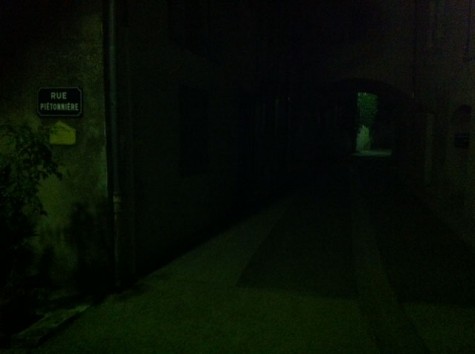 The sign designating the Rue Pietonneire is still visible, even in low light at the end of the day. Haunting, this.
The sign designating the Rue Pietonneire is still visible, even in low light at the end of the day. Haunting, this.
